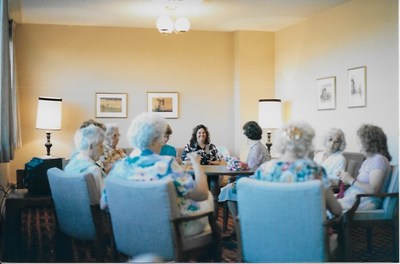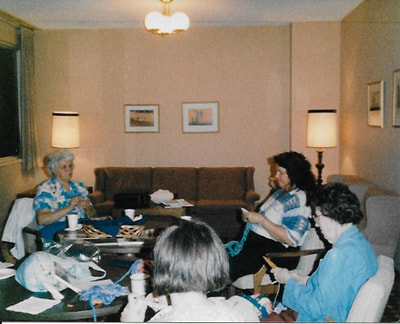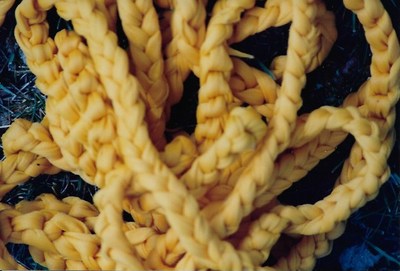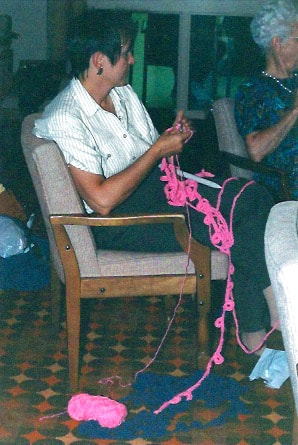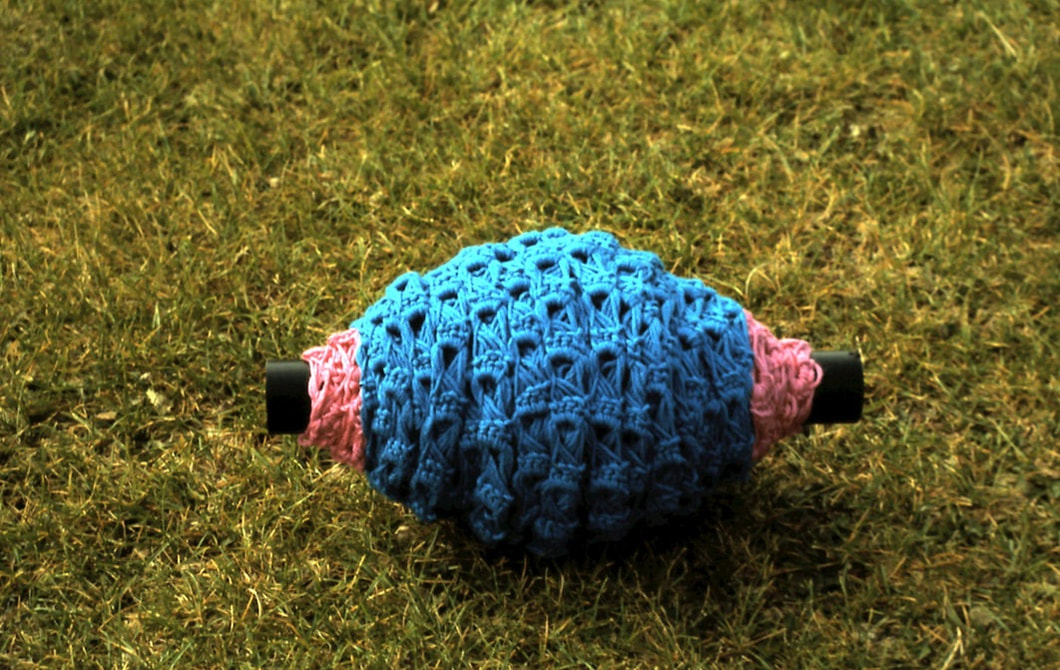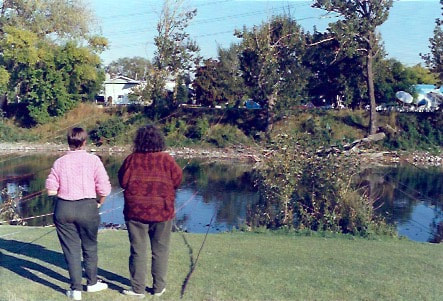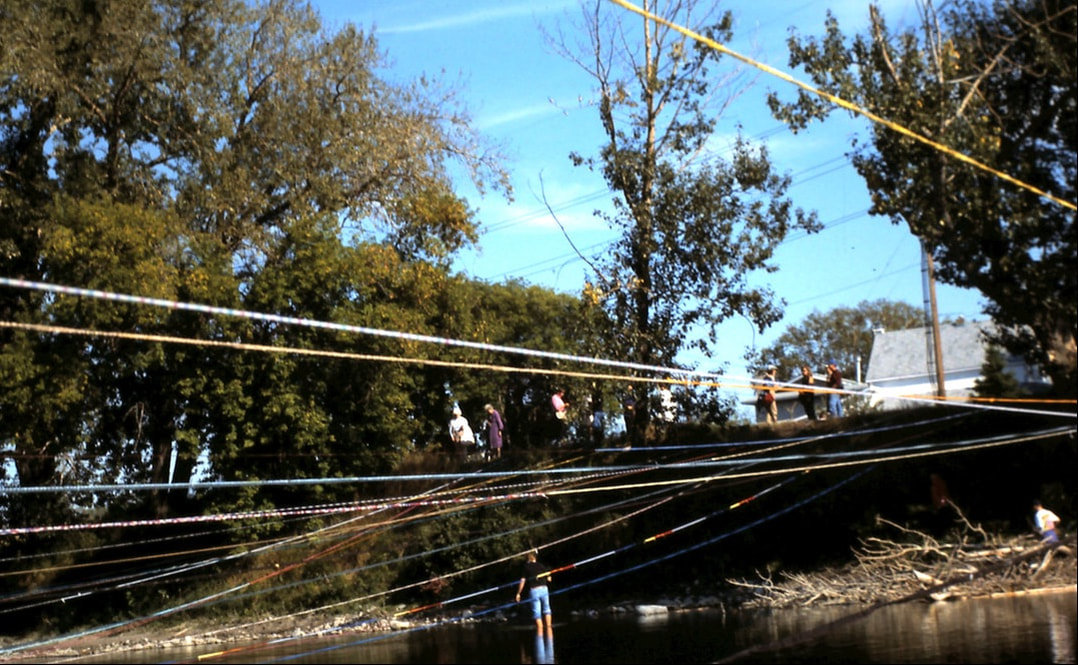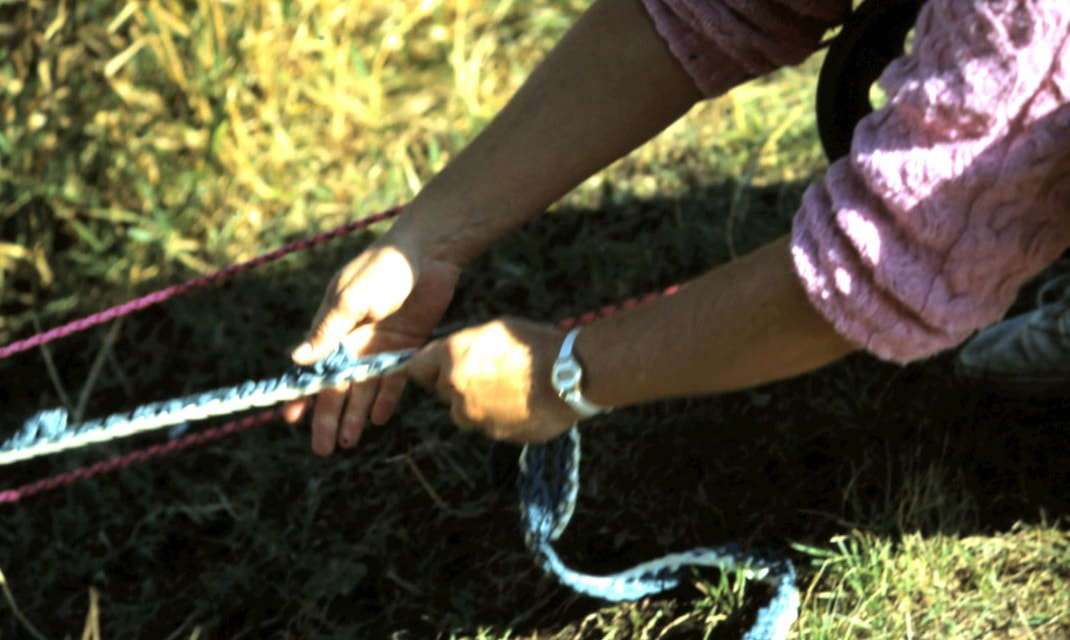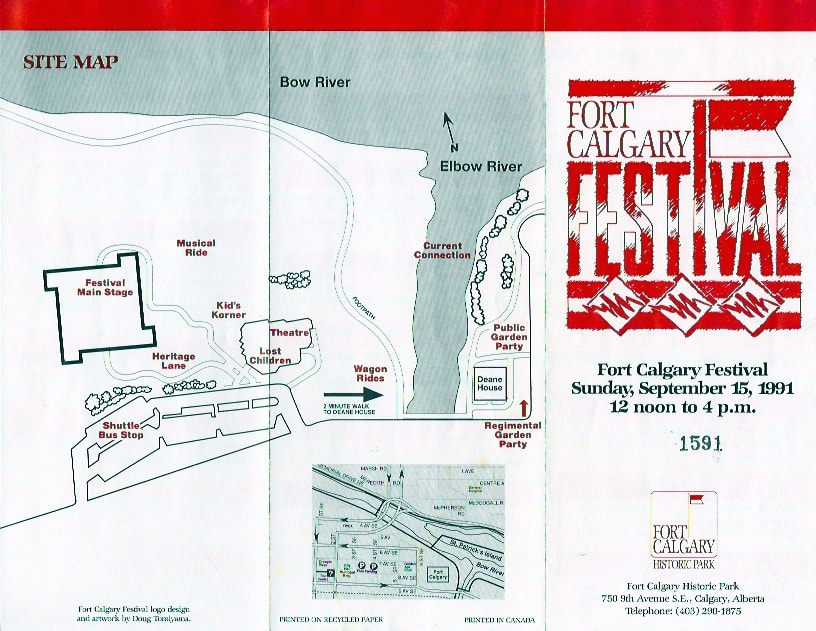|
As independent artists we have chosen to work collaboratively. Our collaborative efforts extend from a need to work with and be part of a community. As part of this community, individual authorship becomes diffused. This diffusion accentuates the intention / meaning of our projects which is stressed in the materials used, the scale, the site, the event and the community involvement. Through the emphasis of these elements, a strong voice is heard which gives value to individual experience often lost in institutionalized processes. After proposing the Current Connection project to the Fort Calgary Historical Board, we were invited to participate in the Fort Calgary Festival, with the site specific fibre installation. One of the artistic/project objectives of Current Connection on the Elbow River was to involve members of the local community, in particular older women whose work, wisdom, and histories are often undervalued in our society. We chose Murdock Manor, a senior's apartment on the periphery of Fort Calgary, as a working place. We began by posting invitations in Murdock Manor and in nearby rural communities, written in five languages, invitations to join us to record stories and to crochet together . Many elderly women responded. We met over a period of four months, in the lounge of Murdock Manor, overlooking the future sites of Current Connection on the Elbow River and Current Connection at the Deanne House. CURRENT CONNECTION on the ELBOW RIVER FORT CALGARY FESTIVAL SEPTEMBER 15, 1991 For this site and event specific installation 40 narrow strips of multi-coloured crocheted yarns, each 175 feet long were strung across the Elbow River, between the Deanne House on 9th Avenue and Fort Calgary, during the Fort Calgary Festival. Crochet strips were hand made by women at Murdock Manor. We met with the women in the 16th floor lounge of this senior residence, which is located on the periphery of Fort Calgary for a period of four months prior to the installation. During these four months we chose as a group to meet once a week, to crochet our favourite stitches, to share our histories, to enjoy tea and sweets, and to become friends. A festival tent was set up on the west bank of the Elbow River for the women from Murdock Manor to gather, to celebrate each other, to celebrate their work and to crochet the last strip to be strung across the river. Prior to the installation, three large photographs were mounted. Two depicted the women crocheting at Murdock Manor. The third a closeup of Mary Ardeylan's hands working on crocheted witches lace. All three photographs were suspended and anchored from the tent top to the ground by cords crocheted of fine black cotton. Throughout the Festival day we worked on opposite sides of the river to warp the strips of crocheted fibre across the Elbow River by the use of a clothesline pulley system. Each strip was unravelled from a spinning "distaff". After applying enough tension to the strips, they were grounded on each side of the river by 4 inch nails so that the strips hung over the water and swayed with the breezes. The warp of strips connected the two shorelines for approximately 300 feet. All work was installed and removed the same day. Quoting Mireille Perron in her essay 'Common Threads: Local Strategies for "Inappropriated" Artists', published in 'MATERIAL matters, The Art and Culture of Contemporary Textiles', published by YYZ BOOKS. |
Murdock Manor
MARY LOU RIORDON AND JOAN CAPLAN














